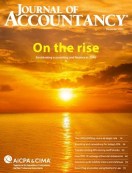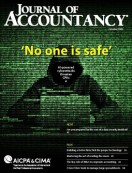- newsletter
- Extra Credit

Make your teaching more effective by using brain science
An educational neuroscientist explains how to use the brain’s pathways to your advantage.
Please note: This item is from our archives and was published in 2018. It is provided for historical reference. The content may be out of date and links may no longer function.
Related
Practical ways to develop students’ critical thinking skills
How to run a successful experiential learning project
TOPICS
Educational neuroscientist Janet Zadina, Ph.D., believes that if you want to teach someone, you just need to find the right path. Seeing teaching through the lens of a researcher — and brain research through the eyes of a teacher — is a unique approach that Zadina first took in her book Multiple Pathways to the Student Brain: Energizing and Enhancing Instruction in 2014. A noted writer and speaker, she focuses on how educators can use the brain’s sensory-motor pathways in combination with its lesser-known reward/survival, social, memory/attention, and frontal-lobe pathways to foster student success.
Zadina, who expects to publish a follow-up book later this year, talked with Extra Credit about such topics as teaching myths, math anxiety, and not labeling students.
Editor’s note: Though it is not our typical practice to use footnotes in e-newsletter articles, we decided to include them here so that readers who want to learn more about the science behind the ideas Zadina discusses can visit the relevant pages in her book.
Q: Neuroscience and education aren’t two things that seem to fit together. Yet that’s your specialty. How did this happen?
A: I was a teacher, and I always taught struggling readers and struggling learners. I saw an article about scientists who had given brain scans to people with dyslexia. I said, ‘Wow, I want to do that.’ It wasn’t easy, but I got a Ph.D. in education, done in collaboration with Tulane Medical School, where my dissertation research was done. Then I was awarded a postdoctoral fellowship in cognitive neuroscience at Tulane to continue learning and researching neurodevelopmental language disorders through MRI brain scans.
Q: What is the biggest myth about learning that you keep seeing crop up?
A: People believe that students have learning styles and they say, “You’re a visual learner,” “You’re an auditory learner.” That is not how the brain works. That was what people believed before we could look in the brain. It’s not accurate. We use all parts of the brain and multiple pathways to learn.[i]
Q: You’ve talked a lot about the brain-compatible classroom. What is that? How can an instructor create one?
A: A brain-compatible classroom is aligned with what we know about how the brain learns best. For example, we know that firing and wiring the expressive pathway through speaking and writing is more effective than [using receptive pathways of] reading and listening,[ii] so we build those strategies into the lesson plans. We know that the more modalities by which students encode learning, the stronger the learning,[iii] so we create lessons that offer multiple pathways to working with the material.
To create this space, the first step is for instructors to learn from credible sources how the brain learns.
Q: What sources would you recommend?
A: My book, of course. Also, dana.org and BrainFacts.org are good sources and have materials for teachers. Always check the bio and credentials of the author. If they have no science background, then maybe look for an alternative source.
Q: What would be the next step?
Every instructor in every content area could teach, in the first week of the semester, one lesson on how the brain learns. Instructors can also modify their teaching practices along the lines of what they have learned, such as the benefits of accessing multiple pathways in a lesson.
Q: What have you learned since publishing your book?
A: The more I learn about it, the more extensively I see the problem of anxiety, stress, and trauma impacting learning.
This is quite true in accounting. Not only do accounting students have all the other factors that can cause students anxiety and stress and trauma, but they also have math anxiety added onto that. Some new imaging research shows that in people with math anxiety thinking about doing math activates the same area as physical pain in the brain. It’s real, and it’s painful.
Q: What can faculty do about it?
A: You have to reduce the anxiety. Instructors can teach students about working memory and how it works so that students don’t need to rely as much on it.
Q: You mentioned “working memory.” What is that?
A: “Working memory” refers to the information you hold “online” temporarily while you are working with it.[iv] Math problems are heavily demanding of working memory capacity.
To lessen the amount of information they need to store in their working memory, students can write things down as they work with them. They can use visuals, pictures, and shortcuts to reduce the working memory load. Faculty can use written instructions and other techniques.
Q: What do educators need to know about the connection between confidence and anxiety?
A: Lack of confidence can be caused by expectations. When you tell students they are smart, this can be problematic. You create an expectation that they feel they have to live up to.
Leading students to focus on the reward, on the outcome, does not lead to the best results. Instead, focus on the process. Show students their progress over time, which is hugely rewarding to the brain.[v] Discuss learning strategies, and over time help them acquire the biggest strategies for themselves. Confidence must be built over time; it’s not something we can give students or do to them.
Q: How can a teacher identify a student with anxiety?
A: Don’t single someone out. If you teach students about anxiety, they can self-identify. I think it’s better that we don’t try to diagnose our students.
There are certain techniques that you can use [to relieve anxiety], certain breathing techniques. Mindfulness mediation has been well-documented to improve the brain and learning in many ways.
Faculty can provide students with more information [about coping with anxiety]. You can put resources in the syllabus, such as videos, reading materials, or links to information about mental health services.
Q: What teaching advice would you give accounting faculty in particular?
A: Make it realistic. When students come up with an example of how a concept might apply to real life, they perform better than students who were asked to write a summary.[vi]
Make it visual. The brain is very, very visual and pictures use less working memory [than words].[vii] Those would be my best suggestions.
Dawn Wotapka is a Georgia-based freelance writer. To comment on this article or to suggest an idea for another article, contact lead editor Courtney Vien.
[i] Zadina, Multiple Pathways to the Student Brain: Energizing and Enhancing Instruction, pp. 3-6 (June 9, 2014).
[ii] Id, pp. 48, 50-51.
[iii] Id, p. 20, passim.
[iv] Id, pp. 65-8, 110.
[v] Id, pp. 78, 93-5.
[vi] Id, pp. 102, 104, 159.
[vii] Id, p. 39.



















